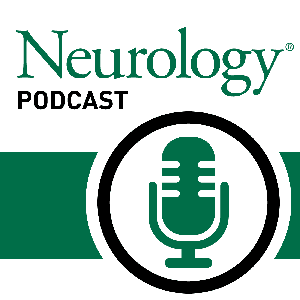Dr Glenn McConell chats with Professor Irene Davis from the University of South Florida who is a top running injuries researcher and the current president of the American College of Sports Medicine. She makes the argument that we were born to run and have evolved to land on the ball of the foot during running and this reduces impact load compared with landing on the heel. Modern running shoes tend to increase the likelihood of landing on one’s heel. She is a fan of minimalist shoes, which tend to result in landing on the forefoot not the heel. She also believes that neutral shoes are best rather than the commonly advised shoes that attempt to minimize pronation. In addition, she also believes that if one has stubborn injuries and have tried other rehabilitation retraining your running gait may be helpful. Not a huge fan of orthotics. I was actually blown away by the chat and very motivated by it. Really fun stuff. Twitter: @IreneSDavis
0:00. Introduction to podcast/Irene Davis
3:05. How Irene got into exercise research
6:43. Running injuries took off when started running shoes
13:30. Variability of loading results in less injuries
18:50. Rear foot landers have weak calves
19:54. Born to run
22:00. Calves vs tibialis anterior/shin splints
23:00. Running boom and padded running shoes
27:00. Landing on the ball of the foot reduces impact load
32:15. Cushioned shoes tended to cause heel landing
33:40. Tarahumara Mexican tribe use minimalist type shoes
35:30. Tibial shock when running on different surfaces
36:55. Running barefoot and with minimalist shoes
40:45. Training in cushioned shoes then racing in flats
42:40. The recent more efficient plated shoes
46:55. Flared shoes and greater pronation
49:40. Should change running gait?
53:50. Retraining running gait
1:02:18. Should change to minimalist shoes to land on ball of foot?
1:06:40. Should use orthotics?
1:10:10. Preparing to run with minimalist shoes
1:18:50. This is, however, controversial
1:28:32. Microtears in muscle/stress fractures
1:30:06. Warming up, stretching, ice useful?
1:35:10. Body weight and injuries
1:36:47. Can anyone run?
1:39:00. Q angle and leg length running injuries
1:42:00. Taping the patellar tendon
1:42:45. What % should increase running per week?
1:43:55. Listen to your body
1:45:00. Irene: her running and injuries etc
1:50:00. Not a fan of super shoes
1:52:17. Need to minimize pronation?
1:53:48. Retraining gait
1:56:07. Sex differences
1:57:00. Age
1:58:35. Her prestigious role as President of ACSM
2:02:02. Takeaway messages
2:03:10. Never too late to change to minimalist shoes
2:03:55. Outro
Inside Exercise brings to you the who's who of research in exercise metabolism, exercise physiology and exercise’s effects on health. With scientific rigor, these researchers discuss popular exercise topics while providing practical strategies for all.
The interviewer, Emeritus Professor Glenn McConell, has an international research profile following 30 years of Exercise Metabolism research experience while at The University of Melbourne, Ball State University, Monash University, the University of Copenhagen and Victoria University.
He has published over 120 peer reviewed journal articles and recently edited an Exercise Metabolism eBook written by world experts on 17 different topics (https://link.springer.com/book/10.1007/978-3-030-94305-9).
Connect with Inside Exercise and Glenn McConell at:
Twitter: @Inside_exercise and @GlennMcConell1
Instagram: insideexercise
Facebook: Glenn McConell
LinkedIn: Glenn McConell https://www.linkedin.com/in/glenn-mcconell-83475460
ResearchGate: Glenn McConell
Email: [email protected]
Subscribe to Inside exercise:
Spotify: shorturl.at/tyGHL
Apple Podcasts: shorturl.at/oFQRU
YouTube: https://www.youtube.com/@insideexercise
Anchor: https://anchor.fm/insideexercise
Google Podcasts: shorturl.at/bfhHI
Anchor: https://anchor.fm/insideexercise
Podcast Addict: https://podcastaddict.com/podcast/4025218




































